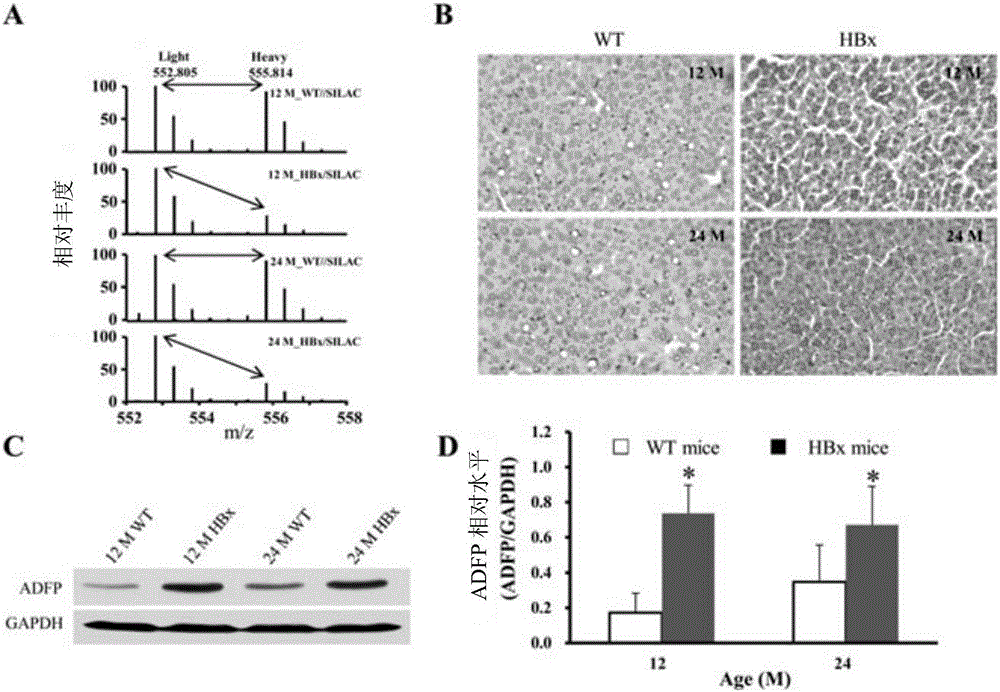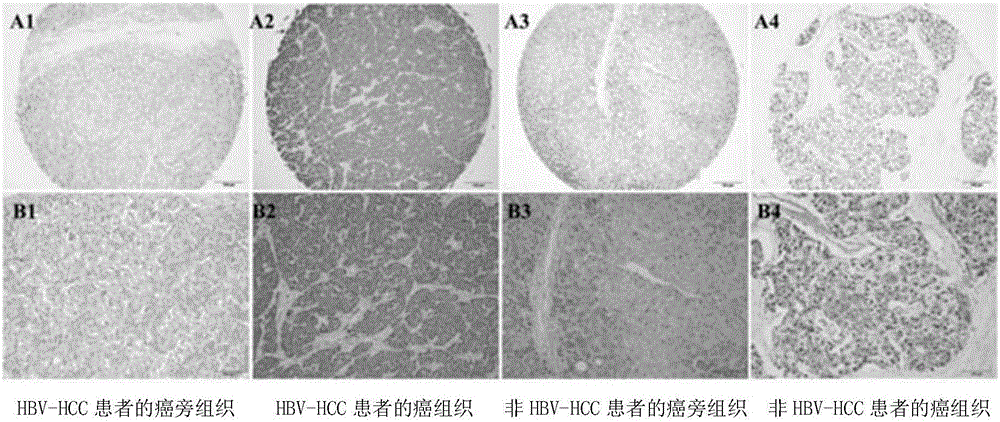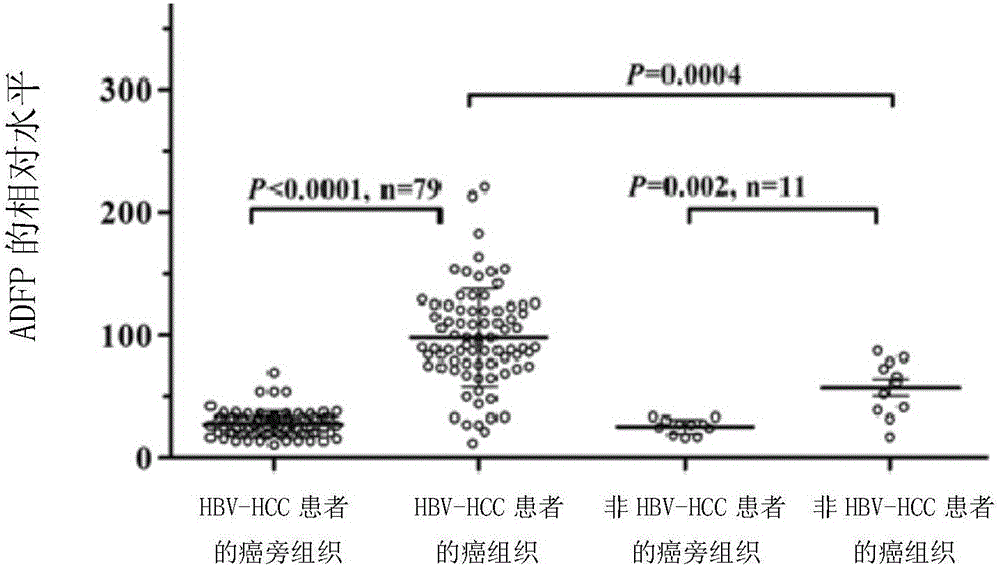Novel use of adipogenic differentiation-associated proteins as screening markers for HBV-HCC patients
A technology related to protein and fat is applied in the field of adipose differentiation-related protein as a screening marker for HBV-HCC patients, which can solve the problems of inability to distinguish abnormal masses or masses, and low detection rate of early liver cancer.
- Summary
- Abstract
- Description
- Claims
- Application Information
AI Technical Summary
Problems solved by technology
Method used
Image
Examples
Embodiment 1
[0020] Example 1. The process of discovering that fat differentiation-related proteins can be used as markers for screening hepatocellular carcinoma
[0021] Paired samples: 5 cases of HBx transgenic mice of different ages, and littermates of wild normal mice.
[0022] The mouse liver that had been internally standardized by SILAC was used as the internal standard protein, and quantitative proteomics UPLC-LTQOrbitrap-Velos ultra-high pressure liquid chromatography and mass spectrometry were used to analyze the protein expression changes in the liver tissue of HBx transgenic mice at different ages; The search engine (version 4.0.4) searches the Swiss-Prot (version 20110710) database and selects the analysis strategy incorporating internal standards. Classic card value: protein abundance increased by 1.0 times or protein abundance decreased by 1.0 times. By manually detecting the mass spectrum, a quantitative peptide of ADFP protein (GAVTGSVERTK) was selected, and it was found...
Embodiment 2
[0024] Example 2, ADFP Level Differences in Cancer Tissues and Paracancerous Tissues
[0025] Paired samples: cancer tissues and paired paracancerous tissues of 79 HBV-HCC patients;
[0026] Cancer tissues and matched paracancerous tissues of 11 non-HBV-HCC patients.
[0027] All patients were volunteers who gave informed consent.
[0028] Each sample was taken separately for immunohistochemical detection. The primary antibody used was rabbit anti-ADFP antibody from EPITOMICS Company, Cat. No. 3293-1. The immunohistochemistry kit used SP Rabbit&Mouse HRP Kit Rabbit / Mouse Universal Streptavidin-HRP kit from Kangwei Century Biotechnology Co., Ltd., catalog number CW0120A. DAB color reaction was used. For the results of an HBV-HCC patient and a non-HBV-HCC patient, see figure 2 (A is a 100 times magnified unit photo, B is a 200 times magnified photo). Image-Pro Plus6.0 software was used to scan and analyze the optical density value of the photos of cancer tissue and adjace...
Embodiment 3
[0030] Embodiment 3, the level difference of ADFP in the serum of different populations
[0031] Five groups of people: 10 normal people, 10 patients with chronic hepatitis C, 10 patients with hepatitis B, 10 patients with HBV-HCC, and 10 patients with drug-induced acute liver injury, all volunteers with informed consent.
[0032] Serum from each volunteer was collected, subjected to 10% polyacrylamide gel electrophoresis, and then western blot. The primary antibody used was rabbit anti-ADFP antibody from EPITOMICS (Cat. No. 3293-1). The secondary antibody used was horseradish peroxidase-labeled mouse anti-rabbit IgG from KPL (Product No. 474-1506). Chemiluminescence Reagent Wwestern Plus-ECL is a product of PerkinElmer (Cat. No. 203-12381). A normal person (lane 1), a hepatitis C patient (lane 2), a hepatitis B patient (lane 3), an HBV-HCC patient (lane 4), a drug-induced acute liver injury For patient (lane 5) results see Figure 4 .
[0033] Use Bandscan5.0 software t...
PUM
 Login to View More
Login to View More Abstract
Description
Claims
Application Information
 Login to View More
Login to View More - R&D
- Intellectual Property
- Life Sciences
- Materials
- Tech Scout
- Unparalleled Data Quality
- Higher Quality Content
- 60% Fewer Hallucinations
Browse by: Latest US Patents, China's latest patents, Technical Efficacy Thesaurus, Application Domain, Technology Topic, Popular Technical Reports.
© 2025 PatSnap. All rights reserved.Legal|Privacy policy|Modern Slavery Act Transparency Statement|Sitemap|About US| Contact US: help@patsnap.com



